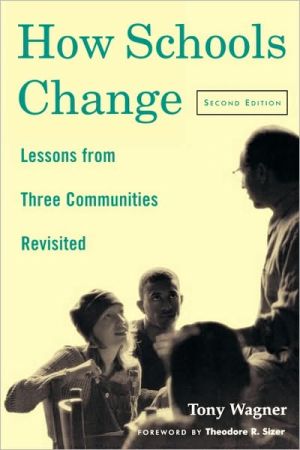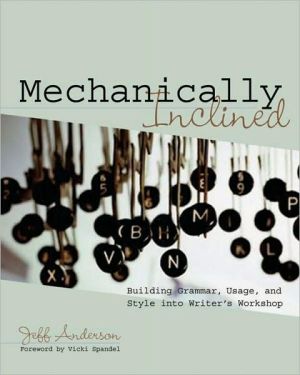How Schools Change
In this compelling book, Tony Wagner analyzes the complex and often painful process of undertaking meaningful school reform by examining the experiences of three representative, yet very different schools in Massachsetts as they attempted to implement significant program changes during the early 1990s. Rejecting as inadequate such traditional "objective" quantitative methods as looking at average test scores and dropout rates, Wagner chose instead to use a mix of qualitative research...
Search in google:
Tony Wagner examines the experiences of three representative but very different schools in Massachusetts as they attempted to implement significant program changes during the early 1990's.
\ \ \ Foreword\ \ \ \ \ Acknowledgments\ \ \ \ \ Introduction to the Second Edition\ \ \ \ \ Introduction: A Nation at Risk\ 1\ \ \ 1\ The Hull Junior-Senior High School\ 15\ \ \ 2\ The Academy at Cambridge Rindge and Latin\ 81\ \ \ 3\ The Brimmer and May School\ 171\ \ \ 4\ Some Lessons Learned\ 233\ \ \ 5\ Reflections at the Dawn of the Millenium\ 271\ \ \ \ Notes\ 311\ \ \ \ Bibliography\ 321\ \ \ \ Index\ 325\ \
\ Publishers Weekly\ - Publisher's Weekly\ This study of the ninth grade in three Boston-area high schools--two public, one private--presents an objective, behind-the-scenes view of the process of educational change. Much has been written about the need for reform of American pedogogy and one of the more creative, and apparently successful, programs is the Coalition of Essential Schools (CES), a construct of Brown University educational specialist Theodore Sizer. To the extent that each school integrated CES philosophy--clear academic goals, core values shared by an involved community and collaboration among teachers, students, parents and others--the systemic change is achieving noticeable results in varying degrees. The most promising seems to be the private school for a host of reasons, especially because it is small and autonomous. Wagner's compelling appraisal of dedicated educators at work delivers a strong message. The author is an assistant professor of education at the University of New Hampshire. (Aug.)\ \ \ \ \ Library JournalThe mythical American high school in Theodore Sizer's Horace's School: Redesigning the American High School (LJ 1/92) has real-life counterparts in the Coalition of Essential Schools (CES). Wagner presents a case study of three school communities. One, Brimmer and May, is a CES school in which Wagner's basic principles for change-setting clear academic goals, fostering core values, and facilitating collaboration among students and teachers-are vigorously and successfully pursued. Brimmer and May, though, is an upper-class private school with small classes and fewer bureaucratic burdens than larger public schools. Wagner's arguments for how this experiment can be transferred to large urban public schools are not so convincing. Still, the book functions well as a socioanthropological study of specific educational environments. A good addition to large education collections.-Arla Lindgren, St. John's Univ., New York\ \ \ BooknewsA behind-the-scenes look at three high schools that are trying to create learning communities that prepare their students for the 21st century: Hull Junior-Senior High School, a primarily white public school in a recession-battered community; Cambridge Rindge and Latin, a multi-ethnic, urban public school; and Brimmer and May, a private school in a wealthy suburb. Wagner concludes with an analysis of the necessary components of successful school reform. Annotation c. Book News, Inc., Portland, OR (booknews.com)\ \








